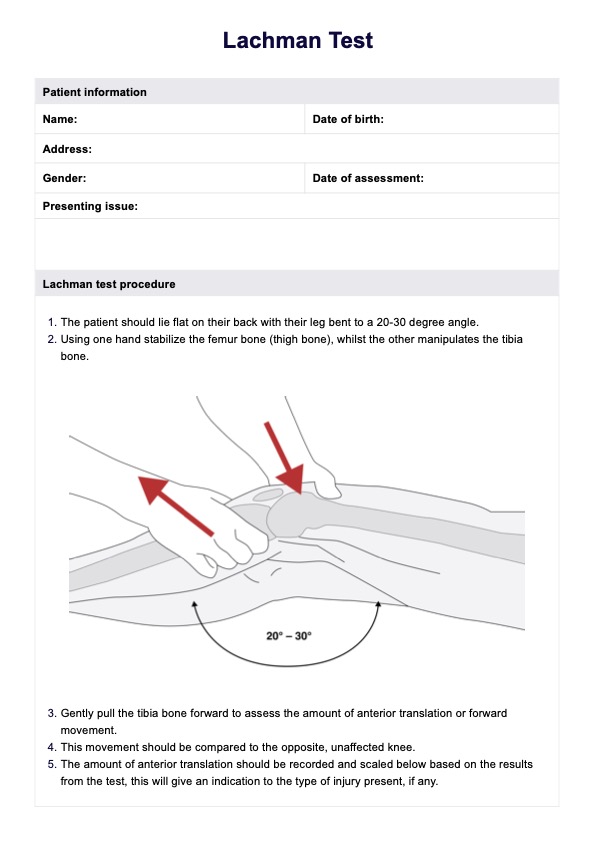A Lachman Test's accuracy depends on the examiner's skill and experience. Still, research suggests it can be reliable for diagnosing ACL tears and injuries when performed correctly.

Lachman Test
Learn how the Lachman Test works and its importance in orthopedic evaluations.
Use Template
Lachman Test Template
Commonly asked questions
No significant risks are associated with a Lachman Test, although patients with knee injuries or instability may experience some discomfort during the test.
A Lachman Test typically takes less than 5 minutes to perform. Still, the overall evaluation process may take longer depending on the injury's complexity and the examination's extent.
EHR and practice management software
Get started for free
*No credit card required
Free
$0/usd
Unlimited clients
Telehealth
1GB of storage
Client portal text
Automated billing and online payments











